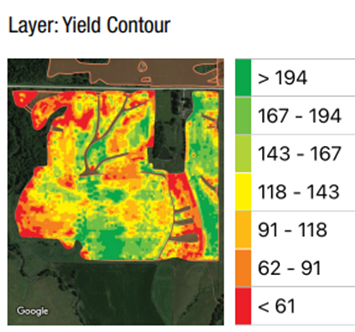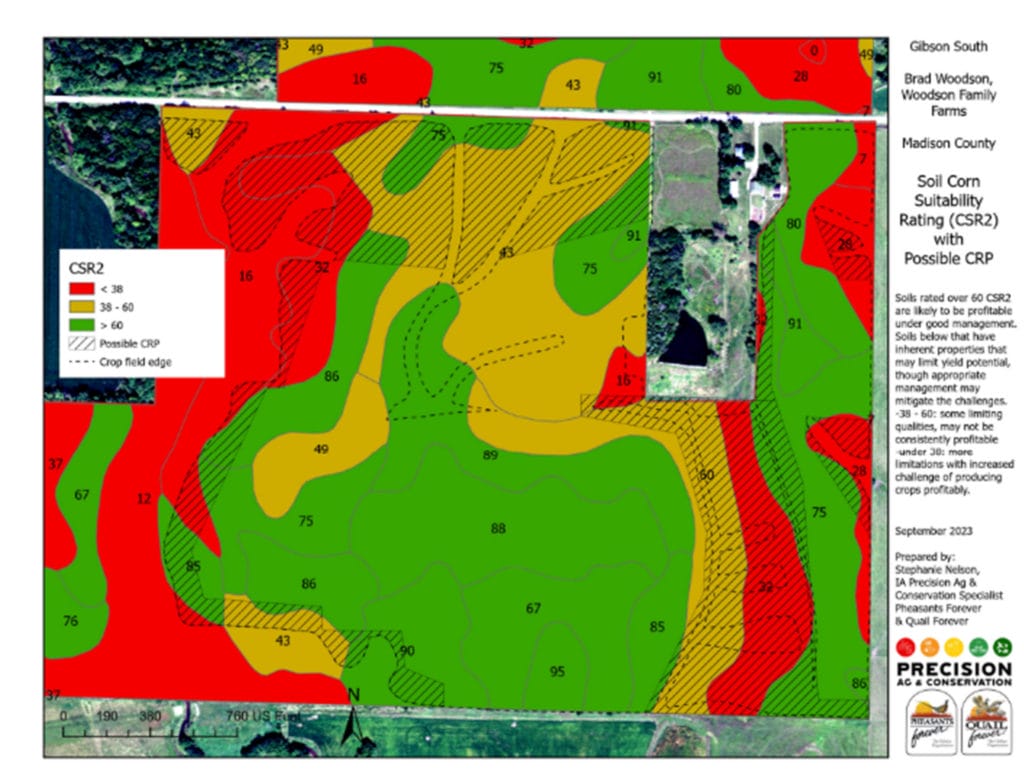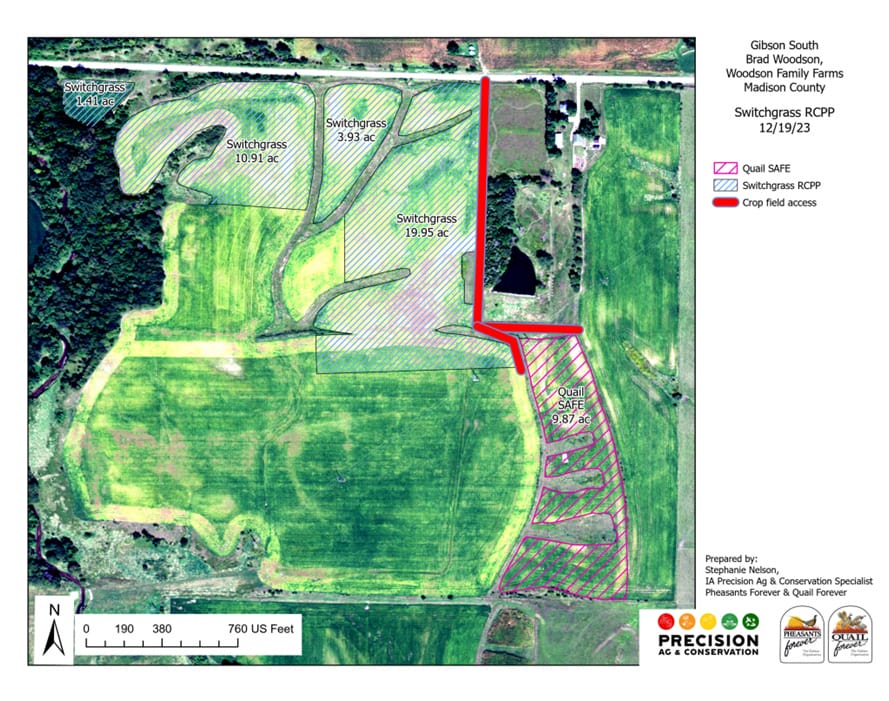Precision Conservation Analysis: Can Habitat Make Your Farm More Profitable?
We know habitat can protect your soil. Can it make your farm more profitable? PFI’s habitat viability manager, Brad Woodson, has been using precision conservation analysis data to turn marginal acres into agricultural opportunities on his farm in Madison County, Iowa. In this three-part blog series, Brad shares how he used conservation analysis data to find low-yield areas on his farm and how he enrolled those acres in conservation programs. Watch for the next two blog posts in the coming weeks!
Using Yield Maps to Find Unprofitable Areas
As a landowner in Madison County, Iowa, I love the rolling topography. Crop fields are interspersed with pastures and woodlands with creek corridors connecting all these habitats together. There are a lot of irregular shaped fields and it turns out, a lot of variability in crop yields.
I didn’t have access to yield maps on our farm until three years ago. When I did, I was immediately struck by the red areas on the map. The red represents the lowest yielding areas of the field. I assumed all parts of the field would be profitable or breakeven but that is simply not true. Why would a farmer continue to farm these unprofitable areas?
To try to answer that question, we need to take a step back in time. Over the years, through various Farm Bills, the USDA has incentivized maintaining crop acres and subsidized row crops through insurance and other payments. This has taken much of the risk out of farming marginal land.
These and other factors led to “fence row to fence row” farming that has persisted for decades. With the technology available to farmers today, it is hard to support farming unprofitable acres, especially when there are more profitable alternatives.
A quick analysis of the yield map led me to speculate that corn and beans were not a profitable crop in certain areas of the field. I began to ask the farmer questions about the cause of the poor yield; was it poor soil, deer damage or some other agronomic factor? After three years of yield data, it was clear that the same areas continue to underperform. It became obvious to me that something had to be done, and then, I discovered something could be done.
I began working for Practical Farmers of Iowa (PFI) in January of 2023 as a habitat viability manager. Much of my background is in habitat restoration and biological surveys but I have recently become involved in farm management as well. Working at PFI to help farmers and landowners create habitat and become more profitable is exciting and satisfying. It is a nice win-win situation.
Precision Conservation Analysis
PFI is partnering with Pheasants Forever on a Conservation Innovation Grant with the NRCS. Pheasants Forever uses technology and data, aptly called precision conservation, to analyze field profitability. I met with Stephanie Nelson, a precision ag and conservation specialist with Pheasants Forever, to analyze a farm where I had concerns about persistent low yields and profitability. It is also a farm where I wanted to develop more habitat.
Stephanie begins her analysis by using the oldest and most readily available data, which is soil maps. In Iowa, all soil types have been given a CSR2 rating, which is a crop productivity index directly correlated with corn yield; CSR2 stands for corn suitability rating.
Using geographic information systems, (GIS) she is able to overlay multiple layers of data including satellite infrared maps called Normalized Difference Vegetation Index (NDVI), topographic maps and lidar (light detection and ranging) maps.
This sounds technical, and it is, but these maps provide information as to why certain areas of a field may be underperforming or need to be taken out of production. The next step is to compare these maps with the actual yield maps. The precision conservation methodology clearly identifies the areas that consistently underperform.
The next step was to identify which areas to take out of production. I met with Stephanie and her Pheasants Forever colleague, Nick Thompson, to discuss available conservation programs as well as their payments and contract lengths. After evaluating the financial incentives and my own decision analysis, I chose to take 46 acres out of production and sign those acres up in two different conservation programs.
Approximately 10 acres will be enrolled in the Iowa Early Successional Quail SAFE Program. This is a type of CRP which is administered through the Farm Service Agency. The remaining 36 acres were enrolled in the Iowa Climate Smart Switchgrass Cropping System Transition. This program is administered through FDC Enterprises, Inc. and funded through NRCS. This program is part of the Iowa Regional Conservation Partnership Program projects selected for 2023.
This was not an easy decision. In part 2 of this blog, I will show the financial analysis I went through to determine that habitat can be more profitable than row crops. In part 3 of this blog, I will explain my decision analysis that made me comfortable and confident in this change.
I would love to hear from you. What is preventing you from taking unproductive areas out of crop production? Do you need help identifying these areas? Are the financial incentives too low compared to cash rental rates? Are you worried about doing the work to plant and maintain a pollinator plot? Are you worried about weeds or the look of habitat in a carefully managed agricultural landscape?
Send me an email brad.woodson(at)practicalfarmers(dot)org and let me know what you think about the questions above.
To learn more about putting data to work for you, contact Pheasants Forever’s precision ag and conservation specialists: Stephanie Nelson at (712) 266-3977 for assistance in Iowa or BJ Werk at (701) 238-6504 for assistance in Minnesota.



